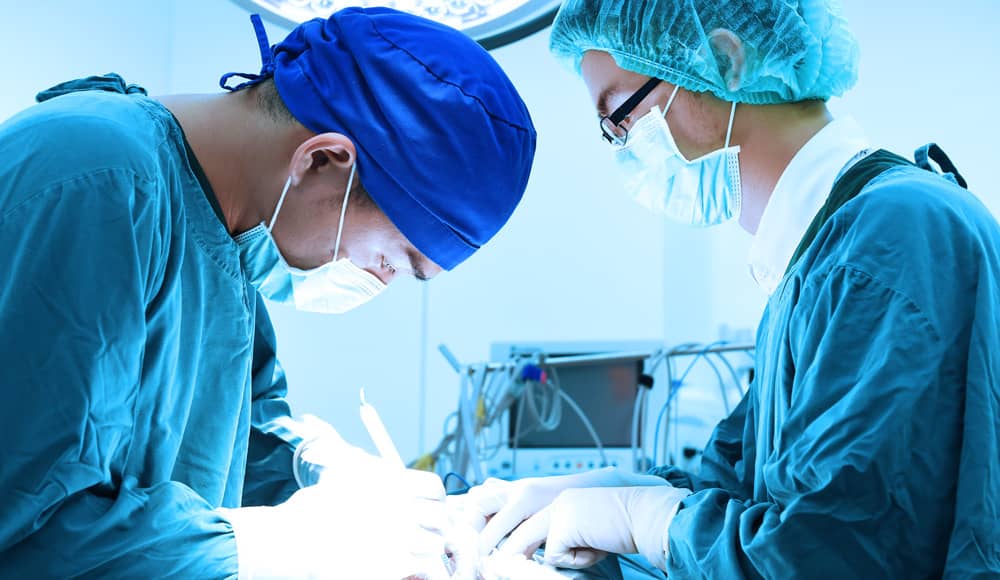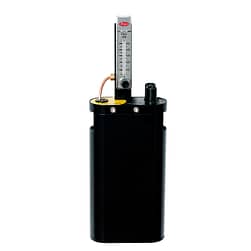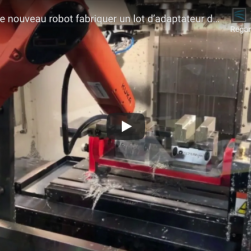
Table of Contents
The term “waste anesthetic gases” is used to designate nitrous oxide emissions that escape the anesthetic circuit, as well as halogenated organic compounds such as isoflurane and sevoflurane. These waste gases can be present in inhaled air while remaining completely undetectable without the use of specialized gas evacuation systems, and as such can pose a significant health risk to members of the veterinary team.
While some small degree of waste anesthetic gas exposure is almost inevitable in veterinary medicine, the National Institute for Occupational Health & Safety (NIOSH) recommends that concentrations of 2 ppm (parts per million) should not be exceeded in the workplace. In reality, however, there is no known safe exposure level.
Health risks of waste anesthetic gases
Waste anesthetic gases can have a variety of adverse effects on members of the veterinary team, depending on whether the individual has short-term exposure or repeated, long-term exposure.
Short-term effects include the following, typically during or immediately after exposure:
- Fatigue
- Headaches
- Drowsiness
- Nausea
- Depression
- Irritability
If an anesthesia circuit is leaking waste anesthetic gases during surgery, for example, the surgeon and anesthetist may start to experience headaches, fatigue, or nausea early during the course of surgery. Long-term effects of waste anesthetic gas exposure, however, are more variable and difficult to quantify.
These can include liver damage, kidney damage, reproductive disorders, neurologic disorders, hematopoietic changes, and neoplasia. Although a number of studies have been performed regarding the effects of long-term waste anesthetic gas exposure, direct cause-effect relationships still have not been fully established. Therefore, it is ideal to minimize long-term waste anesthetic gas exposure as much as possible.
Waste anesthetic gases and pregnancy
Females in the first trimester of pregnancy are thought to be the most susceptible to the negative effects of isoflurane and other waste anesthetic gases.
A study by the American Society of Anesthesiologists found that the risk of spontaneous abortions in female physician anesthesiologists and nurse anesthetists was 1.3–2 times the risk of spontaneous abortion in the general population. Other studies have shown increased risks of spontaneous abortion, infertility, and birth defects among hospital anesthetists, compared to the general public.
There is significant variability between studies, however, which underscores just how difficult it is to determine the effects of long-term waste anesthetic gas exposure.
How scavenging systems reduce waste anesthetic gas exposure
Effective scavenging is a crucial method of decreasing waste anesthetic gas exposure in the workplace. Scavenging systems remove waste anesthetic gases from the anesthesia breathing circuit and vent these gases to the outdoors.
A scavenging system has three main components:
- Gas capturing system: tubing attached to the breathing circuit, which collects waste anesthetic gases
- Interface: connects the gas capturing system to the disposal system and regulates pressures between the two systems
- Disposal system: vents waste anesthetic gases outdoors
Scavenging systems may be active, passive, or semi-active. Active scavenging systems use suction, or a vacuum pump, to actively remove waste anesthetic gases from the breathing circuit and draw these gases into the scavenging system. The interface of an active system requires a negative pressure relief valve in order to prevent negative pressure from reaching the breathing circuit and affecting the patient’s lungs.
A passive scavenging system operates without the use of suction, since the positive pressure of gas in the breathing circuit pushes waste anesthetic gases into the scavenging system. One-way valves in the interface help move waste anesthetic gases outdoors or into a non-recirculating air ventilation system. A passive scavenging system does not involve the use of a vacuum pump or suction.
Activated charcoal cartridges can also be used for passive scavenging. It is important to note the limitations of these cartridges: they are less effective at high anesthesia flow rates, they must be changed every 12 hours, and care must be taken to avoid occluding the cartridge’s air exit holes. When used correctly, however, activated charcoal cartridges can effectively decrease waste anesthetic gas exposure.
Semi-active systems allow the halogenated gases and nitrous-oxide to be continuously evacuated through a blower and network of pipes. Because the scavenger interface can be used to control the airflow to multiple anesthesia machines, it is recommended for most mid-sized clinics and hospitals. This makes it an excellent compromise between passive systems, which have limited effectiveness, and the more costly active systems that are commonly used in large hospitals and research centers.
Veterinary anesthesia gas scavenger systems: Guidelines and best practices
While scavenging systems play a valuable role, veterinary team members must follow a number of additional guidelines to further decrease waste anesthetic gas exposure to themselves and their colleagues.
In 2013, the American College of Veterinary Anesthesia & Analgesia issued a position statement titled “Commentary and recommendations on control of waste anesthetic gases in the workplace.” In this position statement, they outlined the following practices that can help reduce waste anesthetic gas exposure in the workplace:
1. Perform a leak check on the anesthesia machine prior to every surgery.
Close the breathing circuit (connect circuit and rebreathing bag, close pop-off valve, occlude y-piece) and pressurize the circuit (to approximately 30 cmH2O2). Observe to determine whether the pressure within the circuit holds or whether it falls quickly. A rapid decrease in pressure indicates a leak within the anesthetic circuit, which could lead to waste anesthetic gas exposure.
2. Perform regular maintenance on the anesthesia machine and scavenger, as recommended in the machines’ operations manuals.
Routine maintenance needs vary depending on the equipment and manufacturer, but all machines should be inspected and serviced on a regular basis.
3. Only operate the anesthetic vaporizer when it is attached to a cuffed, inflated endotracheal tube.
Turning the vaporizer on prior to intubation or before the cuff is properly inflated can lead to waste anesthetic gas exposure, as gas escapes the breathing circuit.
4. Avoid box or mask inductions.
Box and mask inductions can allow large quantities of waste anesthetic gases to enter the veterinary treatment area. These inductions should be avoided unless absolutely necessary (for example, with exotic patients that cannot be intubated).
5. Leave patients connected to the anesthesia circuit for five minutes after turning off the anesthesia vaporizer.
Allowing patients to remain connected to oxygen via the anesthesia circuit aids in recovery, while also ensuring that waste anesthetic gases exhaled by the patient are delivered to the scavenger.
6. Recover anesthetized patients in a room with high airflow and non-recirculating ventilation.
Even after five minutes on the anesthesia circuit, patients still exhale waste anesthetic gas in recovery. Recovery rooms can easily reach high waste anesthetic level gas levels when multiple pets are recovering from anesthesia simultaneously, especially if the room is small or lacks adequate circulation. Take this into account when determining where anesthetized pets will be recovered or designing a new practice.
7. Refill vaporizers at the end of the day, in a well-ventilated area with few people in the room.
It is impossible to avoid some waste anesthetic gas escape when refilling vaporizers. Vaporizers should be refilled in an empty, well-ventilated room at the end of the day, instead of in a busy treatment area at the start of the work day.
8. Provide regular staff training on waste anesthetic gas exposure.
Employees should be regularly reminded of the risks of waste anesthetic gas exposure and how to minimize these risks. Management should ensure that recommendations are being followed on every anesthetic case performed in the practice.
Monitoring waste anesthetic gas disposal
All practices should perform regular waste anesthetic gas level monitoring. Industrial hygiene laboratories — which can be found online by searching for “occupational safety” — can help implement an air-monitoring program in the practice, by collecting air samples and then testing these samples for the presence of waste anesthetic gases.
Air monitoring should be performed several times per year in order to ensure that equipment is functioning properly and that OSHA compliance guidelines are being followed by the veterinary team.
While it is nearly impossible to avoid all waste anesthetic gas exposure, proper equipment and anesthesia monitoring techniques can significantly reduce this exposure and minimize risks to the veterinary team.
Sources and additional reading
- American College of Veterinary Anesthesia and Analgesia, 2013. Commentary and recommendations on control of waste anesthetic gases in the workplace. Available at: http://www.acvaa.org/docs/2013_ACVAA_Waste_Anesthetic_Gas_Recommendations.pdf
- Coleman, D. 2016. Anesthesia Machines: Finding Leaks. Veterinary Team Brief. Available at: https://www.cliniciansbrief.com/article/anesthesia-machines-finding-leaks
- OSHA, Waste Anesthetic Gases. Available at: https://www.osha.gov/SLTC/wasteanestheticgases/index.html
- Reuss-Lamky H. 2012. Waste Anesthetic Gases: The Invisible Threat. Presented at International Veterinary Emergency and Critical Care Symposium.
- University of Wisconsin – Madison. 2015. Guidance for the Control and Monitoring of Waste Anesthetic Gases in Animal Research. Available at: https://www.uhs.wisc.edu/wp-content/uploads/GuidanceforWasteAnestheticGases062916.pdf







